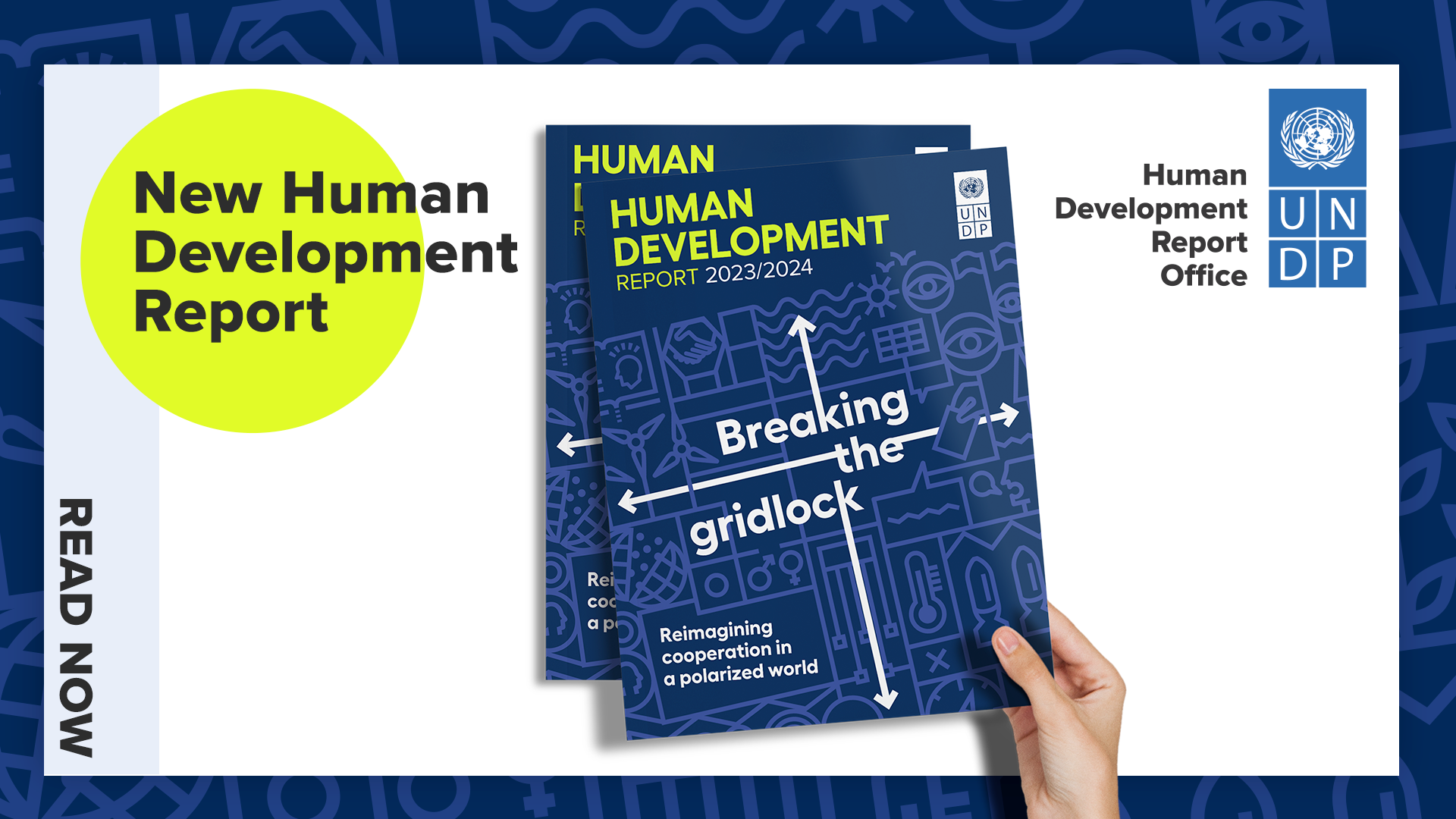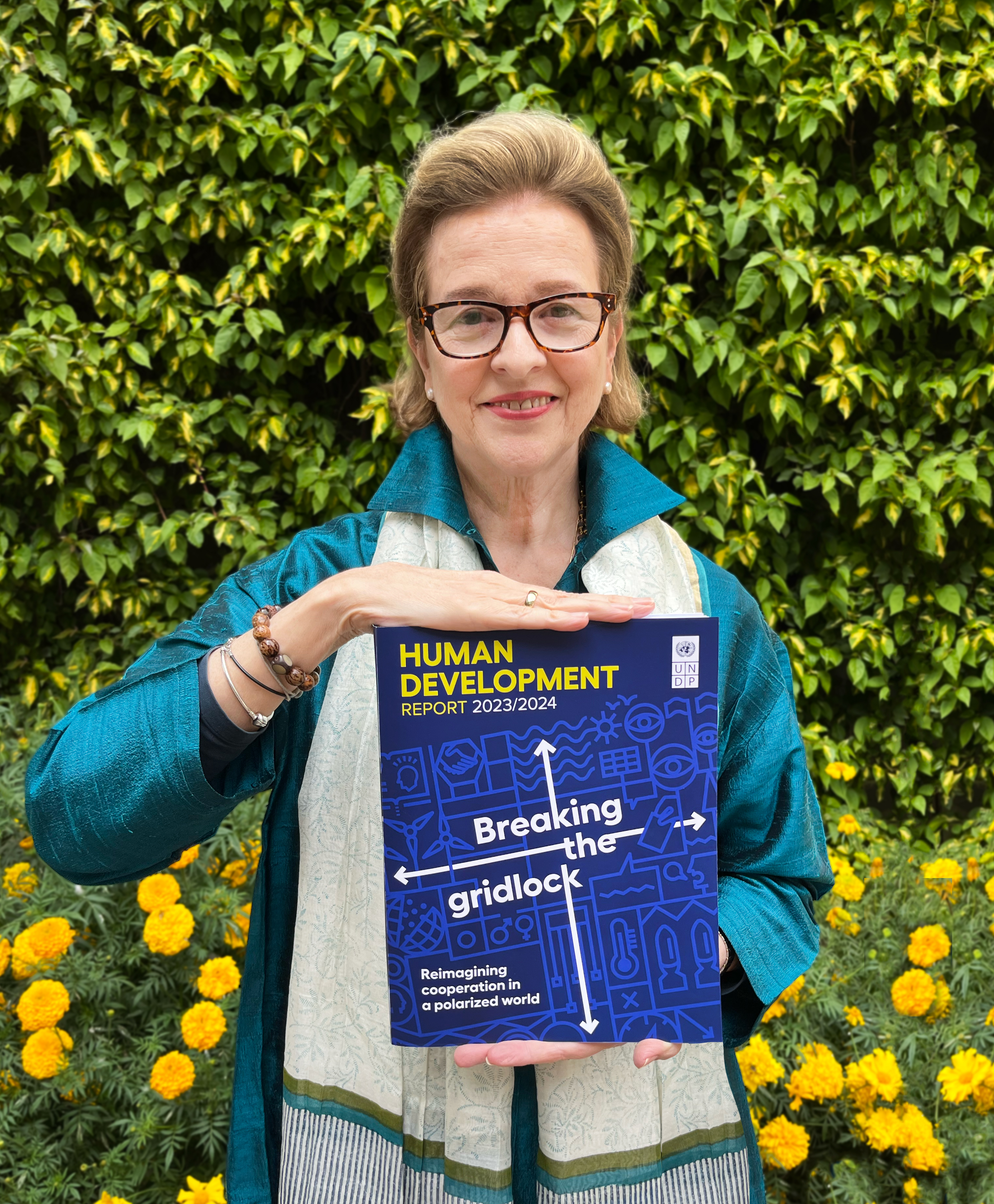
After a drop in 2021, India’s HDI value increases from 0.633 to 0.644 in 2022, placing the country in the medium human development category.

New Delhi, March 14, 2024: After a drop in its Human Development Index (HDI) value in 2021 and following a flat trend over the past few years, India’s HDI value has increased to 0.644 in 2022, placing the country 134 out of 193 countries and territories in the just released 2023/24 Human Development Report (HDR) titled, “Breaking the Gridlock: Reimagining Cooperation in a Polarized World."
The 2023-2024 HDR builds on the 2021–2022 Human Development Report findings, which saw the global HDI value fall for the first time—two years in a row. This report reveals that while rich countries attained record human development, half of the poorest remain below their pre-crisis level of progress.
In 2022, India saw improvements across all HDI indicators–life expectancy, education, and Gross National Income (GNI) per capita. Life expectancy rose from 67.2 to 67.7 years, expected years of schooling reached 12.6, mean years of schooling increased to 6.57, and GNI per capita saw an increase from $6,542 to $6,951.
Moreover, India demonstrated progress in reducing gender inequality. India’s GII value of 0.437 is better than the global and South Asian averages.
“India has shown remarkable progress in human development over the years. Since 1990, life expectancy at birth has risen by 9.1 years; expected years of schooling have increased by 4.6 years, and mean years of schooling have grown by 3.8 years. India's GNI per capita has grown by approximately 287 percent. This highlights the country’s commitment over time to not only accelerating economic growth but also improving the quality of life for all its citizens. But there is room for improvement. With a renewed focus on women-led development, and digital public goods for people and planet, I am confident India can further unlock socio-economic progress, paving the way for a brighter and more equitable future for all,” said Ms. Caitlin Wiesen, Resident Representative a.i, UNDP India.

The report notes that the global overall Human Development Index (HDI) value is greater than it was in 2019. But that doesn’t mean the world has recovered fully from the effects of the COVID-19 pandemic, compounded by other global crises. The 2023 figure remains below the level that was predicted before the pandemic. Essentially, we have not reached the level of human development that could have been expected had the pandemic not happened.
Before the crisis, the world was on track to reach an average “very high” HDI by 2030, coinciding with the deadline for the Sustainable Development Goals (SDGs). Now we are off track, with every region running below its pre-2019 projections.
The report indicates that while wealthy countries are showing signs of robust recovery, the poorest are struggling. All the member countries in the Organisation for Economic Cooperation and Development (OECD) have surpassed their 2019 HDI level. But among least developed countries, only one in two have recovered their already low pre-crisis HDI levels.
This ‘partial, incomplete and unequal’ recovery is leaving the poorest behind, exacerbating inequality and stoking political polarization on a global scale. The result is a dangerous gridlock** that must be urgently tackled through collective action.
However, the Asia-Pacific emerges as a standout region for human development progress, with India demonstrating considerable improvement in its HDI value since 1990.
INDIA HDI TRENDS
With an HDI value of 0.644, the latest HDR places India in the medium human development category. Between 1990 and 2022, the country saw its HDI value increase by 48.4 percent, from 0.434 in 1990 to 0.644 in 2022.
India has also shown progress in reducing gender inequality and ranks 108 out of 166 countries in the GII 2022. The GII measures gender inequalities in three key dimensions – reproductive health, empowerment, and labour market.
The country's GII value of 0.437 is better than the global average of 0.462 and the South Asian average of 0.478*. India’s performance in reproductive health is better than the average of other countries in the medium human development group or South Asia. India's adolescent birth rate in 2022 was 16.3 (births per 1,000 women ages 15-19), an improvement from 17.1 in 2021.
However, India also has one of the largest gender gaps in the labour force participation rate—a 47.8 percentage points difference between women (28.3%) and men (76.1%).
Global inequality on the rise
The report notes that inequality across the world is rising again: after 20 years of convergence, the gap between the richest and poorest countries has started to widen from 2020.
These global inequalities are compounded by substantial economic concentration. As referenced in the report, almost 40 percent of global trade in goods is concentrated in three or fewer countries. In 2021, the market capitalization of each of the three largest tech companies surpassed the Gross Domestic Product (GDP) of more than 90 percent of countries that year.
India's loss in HDI due to inequality is 31.1 percent. South Asia’s loss in the HDI due to inequality is among the highest in the world (after sub-Saharan Africa), followed by the Pacific.
“The widening human development gap revealed by the report shows that the two-decade trend of steadily reducing inequalities between wealthy and poor nations is now in reverse. Despite our deeply interconnected global societies, we are falling short. We must leverage our interdependence as well as our capacities to address our shared and existential challenges and ensure people’s aspirations are met,” said Achim Steiner, Administrator, UN Development Programme. “This gridlock carries a significant human toll. The failure of collective action to advance action on climate change, digitalization, poverty, and inequality not only hinders human development but also worsens polarization and further erodes trust in people and institutions worldwide.”
The report proposes four areas for immediate action to break through the current deadlock and reignite a commitment to a shared future:
“Whether it is placing the SDGs on the development agenda during India’s G20 Presidency or vaccine diplomacy during COVID, the country has shown leadership in leveraging international cooperation for global public goods, demonstrating that breaking the gridlock is possible. India is already a frontrunner in utilizing Digital Public Infrastructure (DPI) to increase citizens' access to essential services, which can help shape agile, global AI ecosystems and responses that meet the needs of people most left behind,” added Ms. Wiesen.
This report opens a new trilogy of human development reports that will explore further the layers of uncertainty identified in the latest HDR: how to address polarization (2023-24), shape our shared digital future to advance human development (2025), and marshal human aspirations to navigate the Anthropocene (2026).
Editor’s Note
HDRO has consistently advised users of the Human Development Indices not to compare values and ranks published in different editions of the HDR. It is not meaningful to compare the Human Development Indices values and ranks published in the HDR2021/22 with the values and ranks published in the HDR2023/24, because the full indices time series for each country was recalculated afresh, to incorporate revisions in the time series of the different indicators, new data availability, and other changes implemented by the entities from where HDRO sources the data.
* A low GII value indicates low inequality between women and men.
** As per the report gridlock means that systemic risks arising from global interdependence are mismanaged or simply unaddressed, that people are walloped by surprises not capitalizing on them.
For media inquiries, please contact:
Amrah Ashraf | Head of Communications | +91-9167535506 | amrah.ashraf@undp.org
Ankita Bhalla | Communications Officer | +91-9810360492 | ankita.bhalla@undp.org